
The Design Museum in London today unveiled 87 nominees for the coveted Beazley Designs of the Year awards. The shortlist includes design projects of all scales across the six categories Architecture, Digital, Fashion, Graphics, Product, and Transport.
The accompanying exhibition Beazley Designs of the Year opens at the museum tomorrow, September 12, and the final winners in each category as well as one overall winner will be made public on November 15.
Check out the 19 shortlisted projects in the Architecture category, including some big name designers like Jean Nouvel, OMA, Smiljan Radic, Paulo Mendes da Rocha, Wang Shu, and Bjarke Ingels, below.
Zeitz Museum of Contemporary Art Africa
Heatherwick Studio
Project description: "The Zeitz Museum of Contemporary Art Africa, in Cape Town, strikingly repurposes a former grain silo made obsolete by containerised shipping. For this post-industrial project, designer Thomas Heatherwick carved out a dramatic, skylit central atrium from within the original 42 tightly packed concrete silos to reveal startling geometries, while also converting them for gallery use. Faceted glass windows were also punched out of the building’s grading tower to create a kaleidoscopic effect."
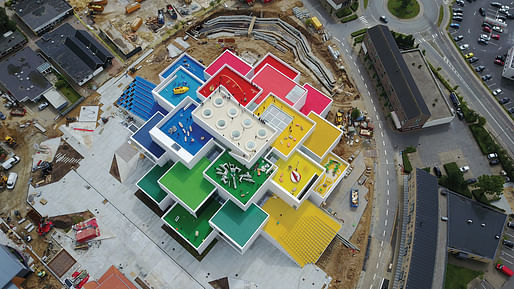
LEGO House
Bjarke Ingels Group
Project description: "LEGO House is an activity centre for playing and learning with LEGO, set in the Danish town where the plastic building brick was invented. The centre offers a variety of exhibition spaces and public squares, including a roof terrace and pixelated staircases that double as informal auditoriums. Inside, four play zones are arranged by colour and programmed with activities to develop different aspects of a child’s learning: creative, cognitive, social and emotional."
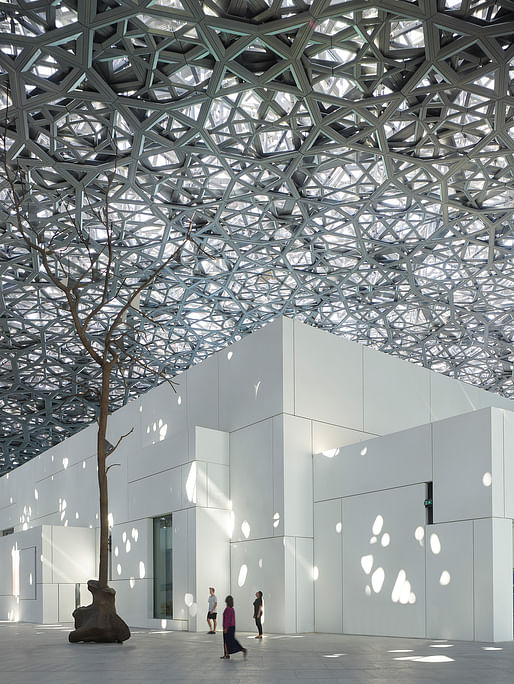
Louvre Abu Dhabi
Jean Nouvel
Project description: "Designed by French architect Jean Nouvel, the Louvre Abu Dhabi is an encyclopaedic art museum. It was set up through a 30-year agreement between the Emirati and French governments by which the Louvre and other French institutions are supplying expertise and loans for much of the content, while the museum builds a collection of its own. Inspired by traditional Arabian architecture, its cluster of buildings is covered by a sprawling latticed dome that provides shade while casting intricate shadows on the ground."

Lumen
Jenny Sabin Architects
Project description: "Lumen was a summer installation commissioned for the annual Museum of Modern Art and MoMA PS1 Young Architects Program in New York. Knitted from luminescent yarns, its tubular structures absorbed light throughout the day, which was then emitted at night. The installation, which took over the courtyard of MoMA PS1, was also embedded with sensors, allowing it to track the densities of bodies, heat and sunlight, while cooling mist ensured it remained a refreshing space for gathering."
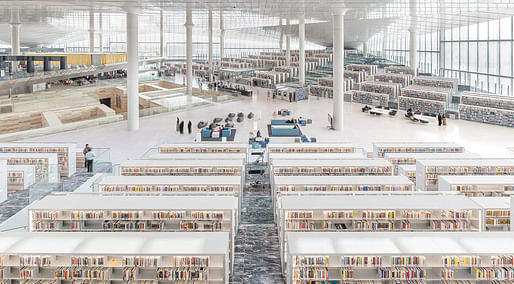
Qatar National Library
OMA
Project description: "The new Qatar National Library celebrates the continued importance of books and public libraries in the digital era. In a single, open space, its more than one million books are displayed on terraces of marble shelving, interspersed with spaces for reading, browsing, and gathering, with views into a sunken, travertine-clad archive for rare books and manuscripts below."

SESC 24 de Maio
Paulo Mendes da Rocha and MMBB Arquitetos
Project description: "The SESC 24 de Maio is a non-profit arts and recreation centre housed in a former office building in downtown São Paulo, Brazil. The building has been adapted to house a theatre, restaurant, library, dentist practice, exhibition space and other facilities, all of which are accessible via a continuous ramp that runs along all fifteen floors. With an Olympic-sized rooftop pool, the complex adds a bright spot to the otherwise grey landscape, visibly enlivening the local area."

Bío Bío Regional Theatre
Smiljan Radic, Eduardo Castillo and Gabriela Medrano
Project description: "The Bío Bío Regional Theatre was commissioned by the Chilean government to rejuvenate the city of Concepción after a devastating earthquake in 2010. Its skeletal frame is wrapped in PTFE, a Teflon-coated fibreglass less than an inch thick. This unusual choice of material gives the building a sense of weightlessness but also an air of mystery; the light gleaming through its walls at night lures in passers-by and hints at the activity within."

Fuyang Cultural Complex
Amateur Architecture Studio
Project description: "Architect Wang Shu’s Fuyang Cultural Complex is a large-scale project outside Hangzhou, China. It includes a history museum, gallery and archive. Incorporating Wang’s characteristic use of vernacular materials, forms, and spatial strategies drawn from Chinese gardens and landscape painting, the building features a dramatic, undulating roofscape where visitors can meander. Rural revitalisation is one of Wang’s greatest concerns, and he accepted the commission only after the local government agreed to let him restore and rebuild a nearby village."
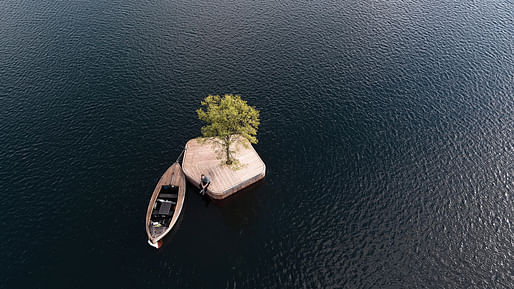
Copenhagen Islands
Marshall Blecher and Magnus Maarbjerg
Project description: "Copenhagen Islands is a series of floating platforms that encourage public recreation in Copenhagen Harbour. The project aims to bring life and activity to the city’s waterways in response to rapid urban development, while anticipating rising sea levels. The platforms each offer different amenities and features, such as a sauna or diving board, and can be brought together as a cluster for special events."

Stone Matters
AAU Anastas / Scales and Laboratoire GSA
Project description: "Stone Matters is a pavilion in Jericho, Palestine, built of 300 interlocking, structural stone components. Showcasing new possibilities for a building material with deep traditions in the area but now used almost exclusively for superficial cladding, the project combines digital design with stereotomy stone-cutting techniques that rely on existing local know-how. The aim is to spur a revival of masonry that will prevent knowledge of the material from being lost."

Gulshan Society Jame Mosque
Kashef Chowdhury / URBANA
Project description: "The Gulshan Society Mosque in Dhaka rethinks the layout of traditional mosque architecture by placing seven identical prayer halls stacked one on top of the other. The project’s aim was to accommodate a large congregation on a small plot, while also providing an attractive landmark for the densely packed area. The building’s outer pattern is an abstraction of a prayer in Kufic script."

Small is Meaningful
Design Trust Futures Studio
Project description: "Facilitating collaboration between the public and private sectors in Hong Kong, Design Trust Futures Studio launched Small is Meaningful. The project saw four mentor–mentee teams tackle Hong Kong’s severe shortage of public space by designing, and in some cases implementing, micro-park concepts across different neighbourhoods. This included a series of portable public furniture, a mobile park built on the back of a truck, and a skip transformed into a children’s playground."

Chaoyang Park Plaza
MAD Architects
Project description: "Chaoyang Park Plaza is a 220,000 square metre office and retail complex of ten buildings situated on the southern edge of one of Beijing’s largest parks. Drawing on classical Chinese gardens and shan shui landscape painting, its forms evoke eroded mountains or rock formations, intentionally prompting a culturally specific blurring of the natural and artificial. The tallest buildings’ vertical fins provide energy-efficient ventilation and filtration, while a pond at their base helps cool the complex’s interiors in summer. The project was awarded LEED Gold Certification by the US Green Building Council."
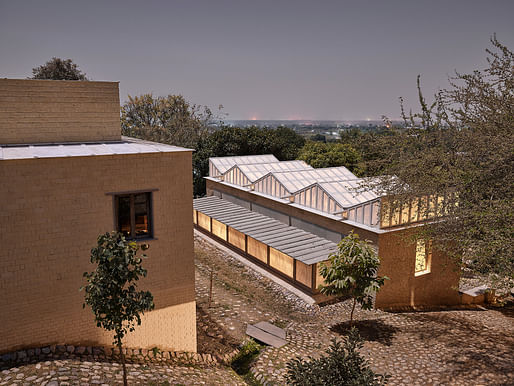
Ganga Maki Textile Studio
Bijoy Jain of Studio Mumbai
Project description: "Ganga Maki is a textile studio run by Japanese designer Chiaki Maki in the foothills of the Himalayas in northern India. Designed by Bijoy Jain of Studio Mumbai, its new home consists of weaving and dying workshops, a gallery, housing and other facilities, all arranged around a central courtyard and constructed by local craftsmen of brick, lime, stone and bamboo."
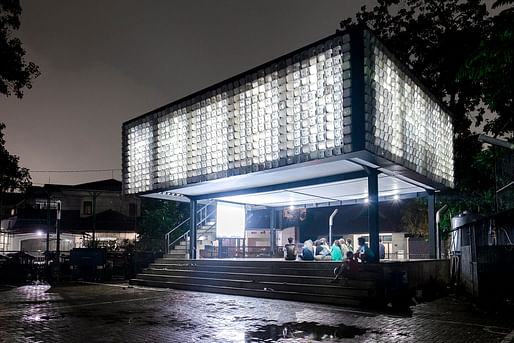
Microlibrary at Taman Bima
SHAU Indonesia
Project description: "Taman Bima microlibrary was the first of a series of small libraries to be constructed throughout Indonesia in an effort to improve the country’s literacy rate. Situated in a small square, the building was constructed on a pre-existing stage, with a façade system of plastic ice-cream buckets inserted in metal frames. The buckets are readily available, cost-efficient, and easy to assemble, while allowing for natural lighting and ventilation."

Jintai village reconstruction
Rural Urban Framework
Project description: "Jintai village in China’s Sichuan province was almost entirely destroyed by an earthquake in 2008, and again by a major landslide in 2011. Rural Urban Framework has since been working with residents to rebuild their community in a way that encourages sustainability, resilience and self-sufficiency. Densely arranged, the new village includes a community centre and twenty-two houses, of various sizes and configurations, that use local materials and incorporate rainwater harvesting, natural light and ventilation, and terraced roof gardens for collective and household farming."

The Common Stove
Matali Crasset
Project description: "The Common Stove was designed for ‘Faraway, So Close’, the 25th Biennial of Design in Ljubljana. The aim of the biennial was to test the potential of rural areas as an alternative to urban living. By placing a large domestic stove in the woods, the project aimed to reactivate the lost and forgotten links between the local community and the forest, inviting the area’s residents to spend time together around the stove’s emanating warmth."
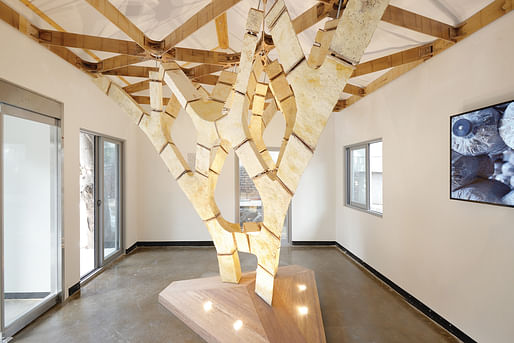
MycoTree
Sustainable Construction (Karlsruhe Institute of Technology)
and Block Research Group (ETH Zürich)
Project description: "MycoTree is an architectural system made of load-bearing mycelium (the root-like fungal colonies that produce mushrooms). While many designers have investigated the possibilities of using mycelium to make furniture, lighting, or cladding for buildings, MycoTree results in an entire self-supporting structure. Grown at a mushroom farm in Indonesia and fitted together using bamboo endplates and metal dowels, the structure offers a sustainable alternative for building construction in the future."

Digua Community
Shu Zhou
Project description: "The Digua Community is a social design initiative transforming abandoned bomb shelters in Beijing into shared community facilities for gatherings, events, and other activities. For its second project, realised in an underground shelter in the Jianxiyuan neighbourhood, area residents were invited to co-design the spaces, offering a rare opportunity in the Chinese capital for direct grassroots participation in local planning."

The Last Nuclear Bomb Memorial / Edition #5
Register by Thu, Jan 16, 2025
Submit by Wed, Feb 19, 2025

Museum of Emotions / Edition #6
Register by Thu, Jan 23, 2025
Submit by Tue, Apr 29, 2025

MICROHOME Kingspan 2024/25
Register by Thu, Feb 13, 2025
Submit by Tue, Mar 18, 2025

Kinderspace: Architecture for Children's Development #2
Register by Thu, Jan 16, 2025
Submit by Mon, Jun 16, 2025
No Comments